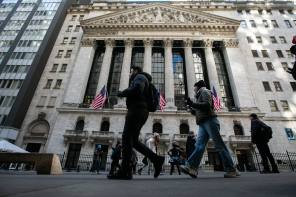
AIM
These stocks will have cheap valuations, whether on a price-to-earnings basis, price-to-book or EBITDA. The managers are also looking for sustainable earnings upgrades: “When we are analysing companies, we really want to find some fundamental change within their business that will lead to a persistent earnings upgrade cycle.”
These companies should also have strong balance sheets and good cashflow generation so that they are able to finance their growth objectives from internal resources. The managers have increased their focus on this last characteristic over time, says Mr Baker.
PROCESS
The fund’s process is bottom-up stockpicking, but the macroeconomic background gives context, says Mr Baker. PMI data, for example, shows an improving economic growth outlook, which gives the managers confidence that earnings upgrades for cyclical stocks have a greater-than-average likelihood of being persistent throughout the year.
The portfolio has been stable for at least 12 months. It has a pro-cyclical bias, with an overweight position in the automotive sector. “We have seen a sooner-than-expected stabilisation of Western European car demand,” explains Mr Baker, pointing to Russia and China as other strong sources of demand. The fund is also overweight in airline stocks, which are benefiting from an increase in business travel and restructuring, and in transportation stocks, which is a play on the improvement in global growth. “Earnings upgrades coming through in those sectors have been persistent,” he says. Conversely, the fund is underweight in pharmaceuticals and food producers, sectors where earnings upgrades have been lacklustre and valuations not particularly attractive.
PERFORMANCE
For the 12 months to January 21, the fund returned 30.11 per cent in sterling, compared with 20.48 per cent for the IMA Europe excluding UK sector. It gained 39.04 per cent over three years and 101.47 over five years, ahead of the IMA sector returns of 29.42 per cent and 83.09 per cent, respectively, according to data from FE Analytics.
In 2013, strong performers for the fund included Airbus, the European airspace and defence company previously known as EADS, which has benefited from better-than-expected cost cutting. The company’s revenues are covered by its order book for the next seven years. Another positive for the share price is that its new plane in development, the A350, is on schedule for delivery.
Nordex, a renewable energy company that makes gearboxes for wind turbines, also helped performance, with earnings upgrades driven by cost cutting and increased demand for wind turbines.
Another strong holding was Bank of Ireland, whose share price rose roughly 100 per cent in the past 12 months, driven by the domestic economic recovery in Ireland. Mr Baker highlights a 25 per cent fall in unit labour costs since 2007, which is attracting foreign direct investment into the country. In December, Ireland exited its bailout programme and its bond auction in January was three times oversubscribed. At the bank itself, cost cutting has improved the net interest margin.
Also beneficial was the fund’s underweight position in Anheuser-Busch, the maker of Budweiser, as the beverages company underperformed.
On the negative side, performance was hit by an underweight position in pharmaceuticals, with Roche, for example, helped by a positive market reappraisal of its potential. An overweight position in Boliden, a Swedish copper and zinc mining company, was also unhelpful, as the company was hit by a longer-than-expected plant shutdown in the first half 2013 that led to earnings downgrades.
In spite of this, the outlook is positive, believes Mr Baker, with better than expected PMIs implying an acceleration of growth. He also sees a big reduction in “tail risks” or potential to spring a big negative surprise, from countries such as Greece and Ireland. Valuations too are attractive, both absolutely, and also relatively, for example, to the US. For those looking for an alternative to some of the traditional European funds this could be one to watch.



